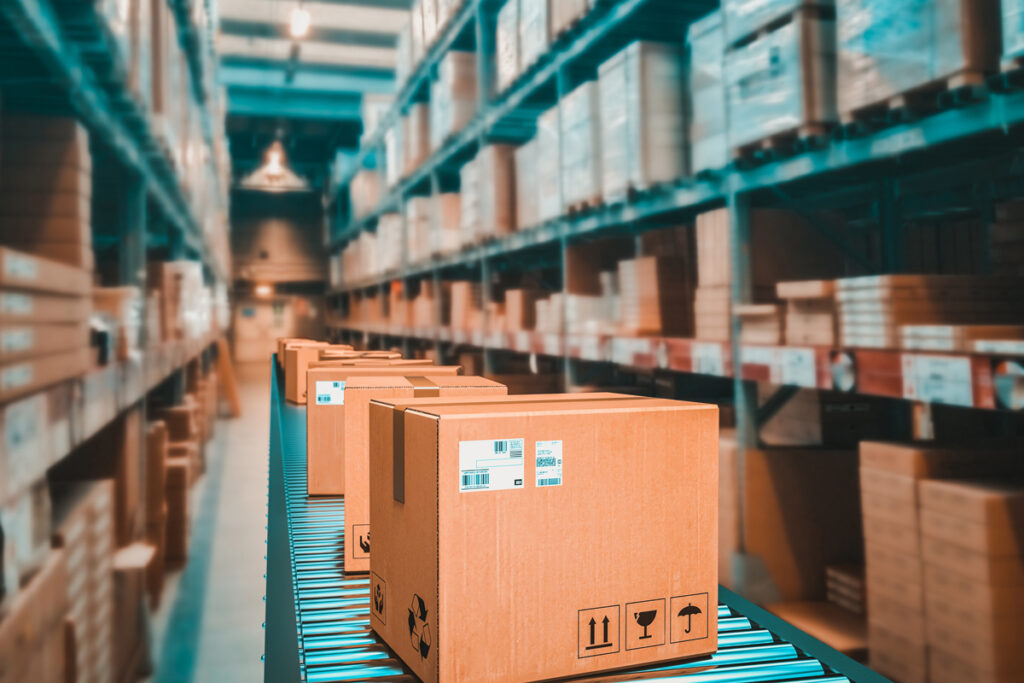How Premier subsidiary S2S is working to create greater diversity in sourcing products for hospitals and health systems, along with long-term resiliency.
June 2022 – The Journal of Healthcare Contracting

A lot has changed in the U.S. healthcare supply chain in the last decade – especially in the last couple of years – as hospitals and health systems pivoted from just-in-time delivery and cost conscious buying habits to alternate sourcing and pandemic needs.

“COVID-19 has undoubtedly highlighted issues with the globalization, overreliance and fragility of our supply chains,” said Colin Bain, president of direct sourcing for Premier, Inc.
For ten years, S2S Global, a direct sourcing wholly owned subsidiary of Premier, has been identifying new and untapped manufacturers around the world – working directly with them to produce high-quality products, including those in short supply.
In the early days, the objectives were around sourcing quality products, and initially just exam gloves, at the best cost possible. “While this is still the core of our mission, we’ve expanded to match the evolving needs of the healthcare supply chain – today and for tomorrow,” said Bain. “S2S now has a broad-portfolio market presence, is considered an innovative and disruptive strategic partner and has doubled down on our commitment to build long-term resiliency. This is critical as our members today are looking for us to aid them in evolving the supply chain away from an isolated, transactional purchasing activity and toward a strategic enterprise-wide function.”
In the following interview, Bain discussed the changes to successfully sourcing critical healthcare products into today’s disruptive marketplace.
JHC: Obviously COVID has been a disruptor. But what opportunities has it presented the supply chain that otherwise may not have been addressed, or addressed as urgently?
Colin Bain: Major opportunity areas, accelerated by the pandemic, are three-fold:
- Greater diversity of manufacturing and suppliers, including greater domestic production
- Rethinking inventory management and safety stock as well as more dynamic and demand-driven strategies, including direct-to-manufacturer sourcing, forward buys and special distribution arrangements
- Technology enablement and automation: both for greater end-to-end visibility and within the production process
These strategies are vital for a future-forward supply chain – to build resiliency, mitigate risk, increase efficiencies and realize cost savings.
JHC: Please tell us about recent S2S initiatives to find sourcing solutions for health systems.
Bain: Together with our members, we’re changing the way we source critical healthcare products and bringing production back to the U.S. – helping to eliminate overreliance on oversees manufacturing and port congestion. Through collaborations with Prestige Ameritech, DeRoyal Industries Inc, Honeywell and Exela Pharma Sciences, we’re producing millions of domestically made PPE (including masks, isolation gowns and nitrile exam gloves) and pharmaceutical products.
Other initiatives include:
- A key differentiator in our strategy is a focus on automation, which brings added efficiencies, savings and speed to market. The DeRoyal partnership, for example, is transforming a traditionally man-made process to fully automated production, with the capability to produce two gowns every second. The isolation gowns are now coming off the line, and we expect this partnership to produce more than 40 million domestically manufactured gowns annually.
- Throughout the pandemic, our direct sourcing capabilities have continued to supply products for members at or above 100% allocation levels. S2S Global delivered more than 166 million masks and respirators and 66 million gowns during the height of the pandemic, and continues to serve as a supplemental source of supply today.
- We’re not only employing innovative strategies to expeditiously access to PPE and other supplies, but we’re also ensuring these products live up to superior clinical standards. All S2S products come from validated and inspected suppliers and are made according to our members’ specifications, building a formulary of high-quality products that meet providers’ expectations. In addition, members who leverage our global direct sourcing capabilities, see an average of $40 million in annualized savings.
JHC: Why did domestic manufacturing not work well in the past? What needs to be (or is) different this time?
Bain: Economics pushed many medical manufacturers overseas, where tax incentives and lower-cost labor enabled cheaper production. Over time, this led to a dynamic in which 80% of all PPE was sourced from Asia, primarily China.
It can be cost-prohibitive for manufacturers who are competing in a lowest-price-wins market. Sustainable solutions for greater domestic production must decrease barriers to entry, namely the time and cost to enter the marketplace – and we pioneered a syndicated model that does just that.
Our model is a vehicle through which Premier, S2S Global and our member health systems pool capital and commit to long-term purchasing to incent the domestic production of vital products. The up-front liquidity, aggregated demand forecasting and commitments to buy give manufacturers the surety needed to expand production, modernize facilities and drive innovations. This ensures that providers have cost-effective, domestic supply alternatives.
S2S is looking to replicate this model with other types of supplies, and we’re in active conversations with four or five other manufacturers at the moment.
Replicable investment models like this build market competition and offer domestic options for providers where they didn’t exist previously. And government-backed, zero-percent interest loans and tax incentives can help further close the cost gap between domestic and foreign manufacturing sources.
JHC: Where does domestic manufacturing fit into the overall sourcing strategy of the U.S. healthcare supply chain amid and beyond the pandemic?
Bain: The pandemic reinforced the fragility of the supply chain and the risks of overreliance on foreign manufacturers.
When I think about domestic manufacturing, I almost think of it as my personal investment portfolio. You don’t want to put all your eggs in one basket. Our belief is that a successful strategy must be diverse and must be domestic. The philosophy of S2S Global and Premier is not to pick up all overseas manufacturing onshore or nearshore, but to have an appropriate amount of backstop.
A new, hybrid approach to supply chain management is needed, where geographically diverse and U.S.-based manufacturing will help reduce overreliance on any single country or region. This diverse and balanced approach is not just a better contingency plan for emergencies, but it also recognizes the need for global sourcing to keep costs in check and help alleviate national security concerns.
Our team is working to balance both, right now targeting a ratio of 70% international and 30% domestic, although that could change.
JHC: Do you foresee a return to normalcy for the supply chain any time soon?
Bain: Economies and industries worldwide – including the U.S. healthcare industry – continue to face significant headwinds such as global transportation delays, labor shortages and rising inflation. And while many of the most severe product shortages have eased, supply disruptions are expected to continue throughout all of 2022.
We believe that S2S’ strategy, including diversification and domestic manufacturing investments, intentional design, automation and lower shipping costs, can help mitigate further challenges in this environment and is an innovative model for long-term resiliency.
A Holistic View
Colin Bain, President of Direct Sourcing for Premier, Inc., said S2S is focused on:
- Sourcing vital products both domestically and internationally
- Providing meaningful cost reduction opportunities
- Providing exclusive global sourcing and manufacturing capability; members are also able to define, approve and refine product specifications
- Establishing the capability to support direct container shipments, taking additional cost out of the supply chain
“We’re taking a holistic view of the entire healthcare value chain, from design and production to delivery, and how to make it more reliable and dependable.”
